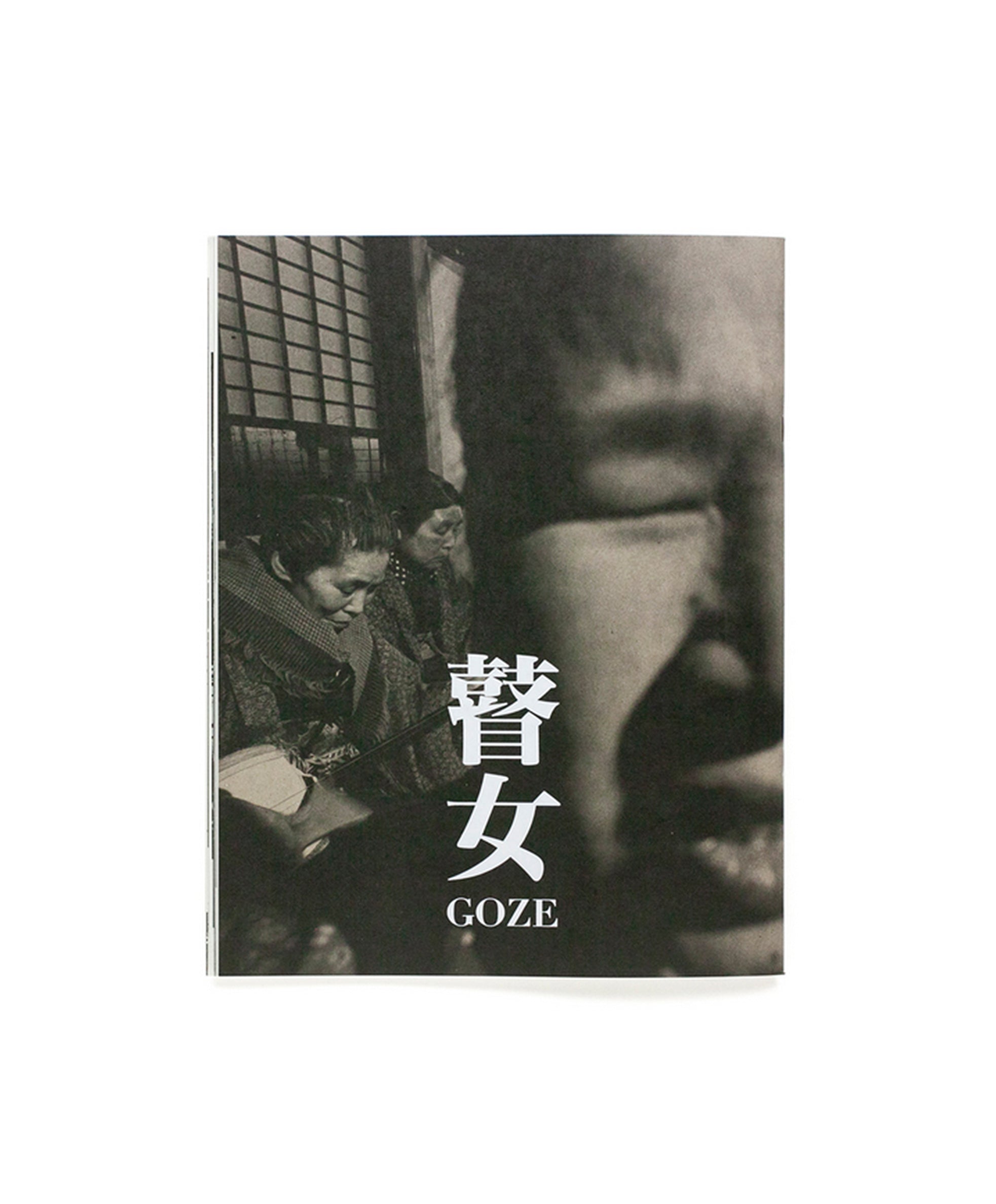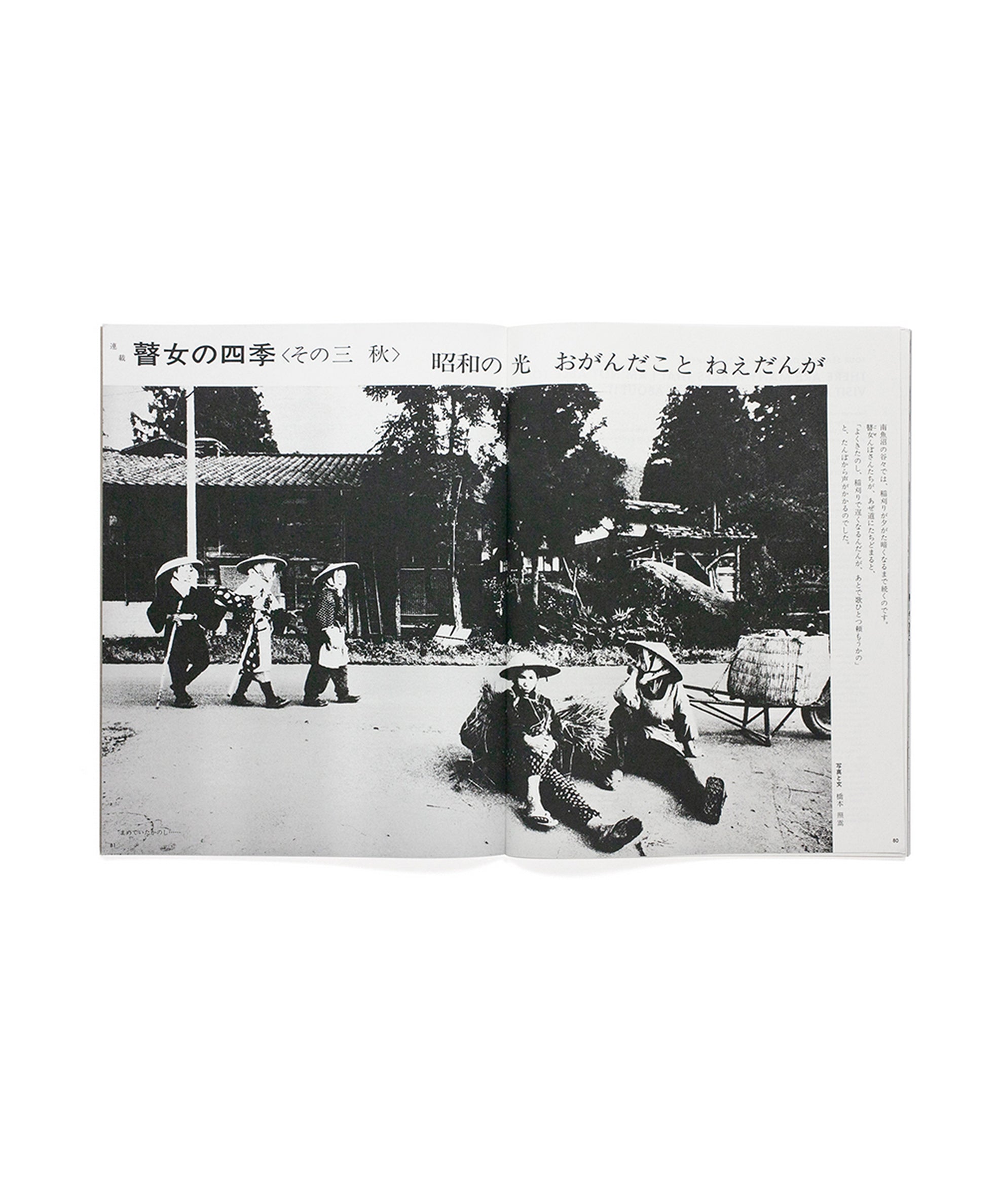SHOKO HASHIMOTO - GOZE ASAHIGRAPH REPRINT
Pickup available at 1 rue des Minimes
– Default Title
-
1 rue des Minimes
09709759181 Rue des Minimes
75003 Paris
France
SHOKO HASHIMOTO
GOZE ASAHIGRAPH REPRINT
Published by Zen foto, 2019
72 pages
Softcover
Language English, Japanese
Limited Edition 700
ISBN 978-4-905453-89-5
Half a century ago, Hashimoto Shoko photographed blind female musicians called the goze who toured and performed in the rural areas along the Sea of Japan. [Note: In Japanese, goze is pronounced as in “ rosé ”]
The goze would visit farmhouses and sing a short song accompanied by shamisen at the entrances in the day time. At night, they would sing songs in different lengths, including narrative songs for the villagers who would gather, and they were rewarded with rice and other crops and money.
When Hashimoto followed three elderly goze with his camera in the early 1970s through the seasons of spring, summer, autumn and winter, their existence was already nearly lost - the industrial and urban development in Japan at that time led to a decline in agriculture and rural population, directly impacting their livelihood.
This publication is a reprint of all the articles on the goze photographed by Hashimoto, which were originally published in Asahi Graph, a Japanese weekly pictorial magazine that continued from 1923 to 2000. Articles included are: “Goze, Sightless Female Singers” from May 8 , 1970; “Four Seasons of Goze” series from October 26, November 2, November 9 and November 16, 1973.
This reprint includes English translations for all the articles and an additional essay written by Hasegawa Hiroshi.
-----
Half a century ago, Hashimoto Shoko photographed blind female musicians called goze who toured and performed in rural areas along the Sea of Japan. [Note: In Japanese, goze is pronounced as in "rosé"]
The goze would visit the farms and sing a short song accompanied by shamisen at the entrances during the day. At night, they would sing songs of varying lengths, including narrative songs for the villagers who would gather, in gratitude the villagers would offer them rice and other foods as well as some money.
When Hashimoto followed three elderly goze with his camera in the early 1970s through the seasons of spring, summer, autumn and winter, their existence was already all but lost – industrial and urban development in Japan at the time led to a decline in agriculture and the rural population, directly impacting their livelihoods.
This publication is a reprint of all the articles about goze photographed by Hashimoto, which were originally published in Asahi Graph, a Japanese weekly illustrated magazine that existed from 1923 to 2000. The articles included are: "Goze, Sightless Female Singers" from May 8, 1970; "Four Seasons of Goze" series from October 26, November 2, November 9, and November 16, 1973.
This reprint includes English translations for all articles and an additional essay written by Hasegawa Hiroshi.




